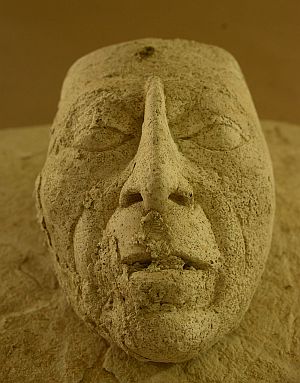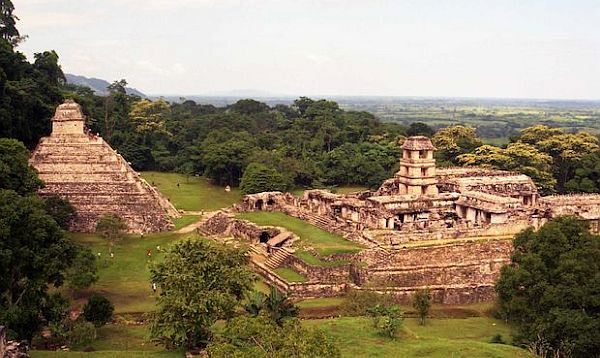Mexico City - An ancient mask depicting a 7th-century Maya king has been discovered in the ancient city of Palenque in Chiapas, Mexico. The find was made in an architectural complex known as El Palacio, where repairs have been underway since May, after Palenque was chosen as the beneficiary of the U.S. Ambassador's Fund for Cultural Preservation in December 2017.
Thanks to former U.S. Ambassador to Mexico, Roberta Jacobson, the United States is funding the restoration work at Palenque, which is focused on two important areas located within the archaeological site: the tomb of Pakal and parts of El Palacio (The Palace) to the tune of $500,000 USD, over the course of three years.
Several factors have negatively affected the archaeological site since its discovery in 1952, including shifting weather patterns, the natural deterioration of the construction materials and the deforestation of the surrounding area.
 |
Archaeologists say that the sculpture symbolizes 7th-century Maya ruler K'inich Janaab 'Pakal, known as "Pakal the Great."
While the specific origins of the stucco mask are unknown, experts noted its naturalistic size and style. The artifact, they added, was part of some architectural decoration.
Other ancient objects found at the site include ceramic figurines and pots, carved bones, two pearls, fragments of jadeite, flint, nacre shell, obsidian and cinnabar, a piece of mirror-polished pyrite, as well as numerous bones of turtles, fish, lizards, crab pincers, small birds and snails.
A UNESCO world heritage site, Palenque's ruins continue to offer fresh glimpses of the lost Maya civilization. "Palenque was at its height between AD 500 and 700," explains UNESCO, on its website. "The elegance and craftsmanship of the buildings, as well as the lightness of the sculpted reliefs with their Mayan mythological themes, attest to the creative genius of this civilization."
In 2016 archaeologists at Palenque discovered an underground water tunnel built under the Temple of Inscriptions, which houses the tomb of Pakal.
Earlier this year archaeologists harnessed sophisticated technology to reveal lost cities and thousands of ancient structures deep in the Guatemalan jungle, confirming that the Maya civilization was much larger than previously thought.
From its heart in what is now Guatemala, the Maya empire reached the peak of its power in the sixth century A.D., according to History.com, although most of the civilization's cities were abandoned around 900 A.D.
Sources: inah.gob.mx • Fox News


